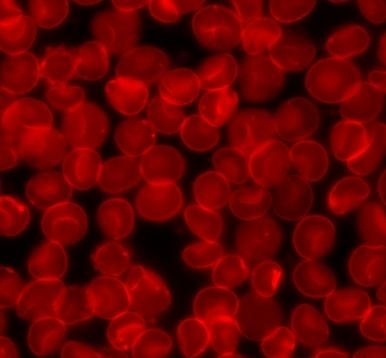Injectable Oxygen Could Help People Breath Underwater; Keep Patients Alive After Lung Failure

Researchers from Boston Children's Hospital have created injectable oxygen microparticles for patients with breathing impairments.
The emergency, IV oxygen-delivering syringe contains microparticles of oxygen gas and liquid. Details of the microparticles were published in a June 2012 issue of Science Translational Medicine.
Led by Dr. John Kheir of the Cardiac Intensive Care Unit at Boston, chemical engineers, particle scientists, and medical doctors teamed up to create the tiny particles for patients having difficulty breathing.
One of Dr. Kheir's patients was a 9-month-old girl who had pneumonia and trouble breathing. Five minutes after checking up on her, Dr. Kheir and his team were alarmed by the bell and returned to her room, where they found her face covered in blood. Her lungs began filling up with blood and doctors spent almost 30 minutes pumping it out.
It was too late, the girl went into cardiac arrest and her brain was deprived of oxygen. She died three days later.
Dr. Kheir was a fellow at the time of the incident and recalled wanting to create oxygen that would effectively support patients intravenously.
Thus arose the injectable particle. It could sustain patients between 15 and 30 minutes after experiencing respiratory failure.
"This is a short-term oxygen substitute — a way to safely inject oxygen gas to support patients during a critical few minutes," Dr. Kheir talked about the technology in a press release. "Eventually, this could be stored in syringes on every code cart in a hospital, ambulance, or transport helicopter to help stabilize patients who are having difficulty breathing."
The particle has three to four times the oxygen of the red blood cells circulating in our body, and is encased in a cell membrane that consists of fat that's flexible and easily flows through the capillaries.
But the particle didn't just develop overnight. Researchers took years to whittle it down to the right oxygen concentration and size required to make it safe to inject. They used a sonicator that uses sound waves to blend the oxygen and fats together.
"Some of the most convincing experiments were the early ones," Dr. Kheir said. "We drew each other's blood, mixed it in a test tube with the microparticles, and watched blue blood turn immediately red, right before our eyes."
Experts are saying the potential uses for this new particle could extend to military, covert teams, even oil rig crews who would be able to breathe underwater for 30 minutes at a time without coming above for air.



























